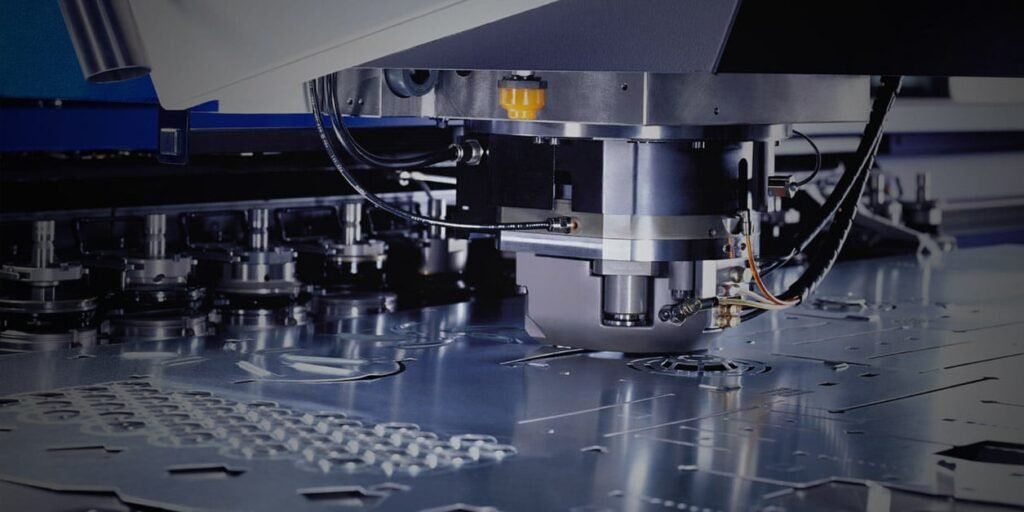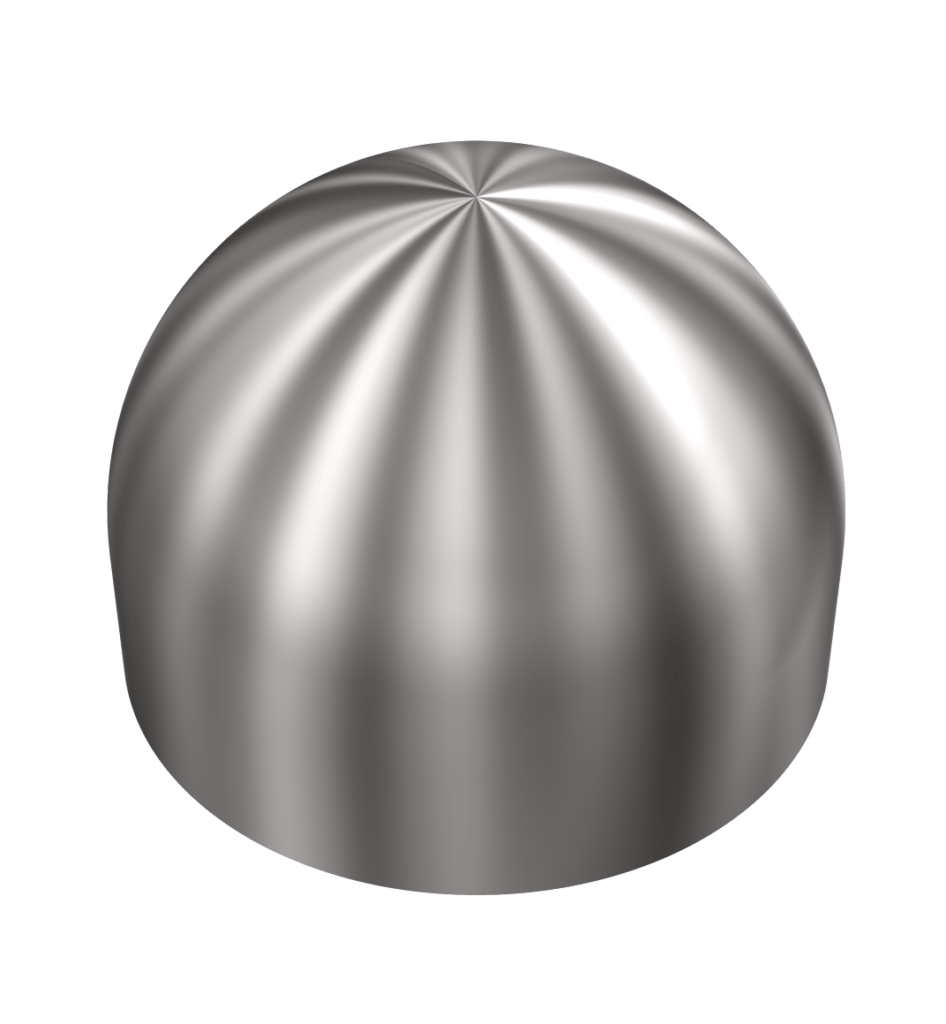
What is Metal Spinning?
Metal spinning is a mesmerizing art form, where the metalworker becomes a dance maestro of sorts. Imagine this: with just a lathe in hand, a piece of metal materializes into something extraordinary through the sheer power of spin. Whether it’s crafting a delicate bowl, an elegant vase, or even a gleaming helmet fit for royalty (though perhaps not advisable for medieval jousting), metal spinning is pure magic.
This craft is like stepping into a time warp, where the artisan and the metal engage in an intricate tango. As the metal gyrates on the lathe, it transforms before your very eyes – contorting and molding itself at the whim of its spinner. It’s akin to what Alexander Calder once mused about his own work: “I paint with shapes.” But in metal spinning, these shapes aren’t merely painted; they are sculpted, molded, and imbued with life by the skilled hands and creative vision of the spinner. It’s an art that embodies both raw power and ethereal beauty, producing functional masterpieces that transcend generations.
The History of Metal Spinning
Metal spinning, a craft shrouded in the mists of time… well, not exactly ancient history, but close enough to make you wonder. The art of shaping metal into elegant forms and flowing curves has endured through the ages. In days gone by, it was all handiwork no fancy contraptions or gadgets to ease the burden. Just pure determination, elbow grease, and probably aching muscles. As the legendary metalworker Samuel Yellin eloquently put it, “In my realm, there are no clear beginnings or definite endings; just boundless potential within a piece of solid metal.”
The tale of metal spinning reads like a tapestry woven with intricate detail. From its modest origins in ancient civilizations like Egypt and China to the era of industrialization where machines began to take charge, metal spinning has evolved immensely. It’s akin to witnessing a metamorphosis from caterpillar to butterfly unfold before your eyes – only with more sparks flying and less fluttering wings. As Fred Dibnah astutely observed, “Metal spinning is an exquisite fusion of resilience and elegance; a delicate balance between fiery passion and refined skill.” And indeed, his words ring true in every molten drop that falls on the anvil’s surface.
Materials Used in Metal Spinning
Let’s now delve into the enigmatic world of metal spinning and explore the intriguing realm of materials. In this captivating craft, the choices are abundant, yet not all metals possess the same allure. Just as they say, what shines brightly may not always be gold – it could be aluminum or perhaps copper.
Within the domain of metal spinning, we witness a captivating display starring stainless steel, aluminum, and even titanium. Each metal exudes its own unique charisma in the spinning arena – whether it be the robustness of steel, the feather-light quality of aluminum, or the unwavering resilience of titanium. As I often muse, “Select your metal with care akin to selecting your coffee – bold, velvety smooth, and perfectly suited to your palate.”
The Equipment Needed for Metal Spinning
Oh, the enigmatic tools required for the art of metal spinning – the instruments that transform a mere piece of metal into a masterpiece. Let’s explore the mesmerizing realm of metal spinning machinery, shall we?
First in line is the reliable lathe. As proclaimed by the revered machinist Stephen Dewick, “The lathe is the beating heart of metalworking.” This contraption whirls the metal at dizzying speeds, enabling artisans to mold it with exactitude and elegance. It’s akin to a dance partner, swirling the metal into magnificent forms. And let’s not overlook the mandrel, the unassuming champion of metal spinning. Acting as a sturdy anchor, it ensures that everything stays in place while allowing for smooth and consistent rotation of the metal. In perfect sync with the lathe, the mandrel is indispensable for crafting seamless and impeccable designs.
Metal Spinning Techniques
Venture into the mesmerizing realm of metal spinning techniques, where your journey begins with the enigmatic allure of “hand spinning.” Here, a delicate dance unfolds between skilled hands and malleable metal, creating a symphony of finesse and precision. Renowned metalworker D.A. Frith aptly described it as an art form that transcends mere craftsmanship – it’s a transformative experience where raw materials yield to the touch of human ingenuity.
Transitioning from traditional methods to cutting-edge technology, we encounter the ever-evolving world of “CNC spinning.” In this realm, precision merges seamlessly with automation, defying conventional wisdom much like industrialist Henry Ford challenged norms with his revolutionary innovations. The intricate designs and flawless repetitions achieved through CNC spinning are nothing short of awe-inspiring, pushing boundaries and unlocking new possibilities for even the most seasoned metal artisans. Embrace this technological marvel as your creative canvas expands exponentially, inviting you to explore uncharted territories fueled by imagination and technical mastery.
Common Applications of Metal Spinning
Metal spinning, a technique of enigmatic versatility, meanders through an array of applications, from the pragmatic to the purely enigmatic. A common manifestation of this arcane artistry is in the crafting of lampshades. These spun metal encasements not only disperse light with a mysterious beauty but also imbue any space with an aura of sophistication. As Charles Eames cryptically mused, “The minutiae are not mere minutiae. They compose the design.” The intricate and exacting nature of metal spinning can transmute even the most banal lampshade into functional masterpieces.
A bewitching realm where metal spinning exerts its spellbinding influence is in the construction of musical instruments. The seamless contours achieved through this mystical process enable the fabrication of brass and copper bells for instruments such as trumpets and French horns. These bells transcend their role as mere components; they are essential to shaping sound quality and resonance. In echoing tones reminiscent of Miles Davis’s immortal words, “It’s not solely about playing notes; it’s about withholding them,” we unravel how metal spinning orchestrates harmonies that reverberate across global audiences within the symphony that is music.
Advantages and Disadvantages of Metal Spinning
Oh my, oh my, look who has stumbled upon the perplexing realm of the Advantages and Disadvantages of Metal Spinning section! Let’s delve into it, shall we?
To begin with, let’s ponder over the benefits of metal spinning. One standout advantage is the burstiness it brings to shaping various metals into intricate designs. As the renowned metalworker Albert Paley eloquently stated, “Metal spinning opens up a world of endless possibilities in creating truly unique and mesmerizing pieces.” Whether you are fashioning a sophisticated lampshade or an ornate bowl, the boundless flexibility of metal spinning is truly awe-inspiring.
On the other hand, one must be mindful of the constraints that accompany metal spinning. The process can be enigmatic and demands a certain level of expertise to master. Just like my wise Uncle Bob used to remark, “Metal spinning is not for those lacking courage; you must possess a steady hand and a sharp eye for detail.” Therefore, while the end result may be exquisite, navigating through the challenges along the way can indeed be quite perplexing.
Quality Control in Metal Spinning
Quality control in metal spinning is the unsung hero of manufacturing, ensuring that the final product shines without any unexpected wobbles. Imagine spending hours shaping a piece of metal into a flawless masterpiece only to discover it’s as lopsided as a table missing a leg. That’s when quality control steps in like a superhero, ensuring everything is just right. Remember the old saying “Measure twice, cut once”? In metal spinning, it’s more like “Measure, spin, check, repeat until perfection.”
Precision rules the realm of metal spinning, with quality control serving as the trusted advisor. Just as a chef tastes their dish before presenting it to guests, a metal spinner meticulously examines their creation for any flaws. It’s all about guaranteeing every curve is smooth, every edge sharp, and every dimension precise. As Bob Ross famously said: “We don’t make mistakes; just happy little accidents.” But in metal spinning, there’s no room for accidental wonkiness – only excellence will suffice.
Metal Spinning in Art and Design
Metal spinning in the world of art and design is a mesmerizing blend of craftsmanship and creativity, where artists masterfully shape metal into gleaming works of art that capture the light just right. It’s truly magical to witness a simple sheet of metal transformed into an eye-catching piece that sparks conversations and captivates the viewer.
The possibilities with metal spinning are endless, allowing artists to create unique and captivating pieces that stand out in any space. From elegant lampshades to bold sculptures, metal spinning pushes the boundaries of what can be achieved with this versatile material. As Frank Gehry once said, “luxury isn’t about buying expensive things; it’s about appreciating beauty,” and what better way to appreciate the beauty of metal than through intricate spins that elevate any environment’s aesthetics.

